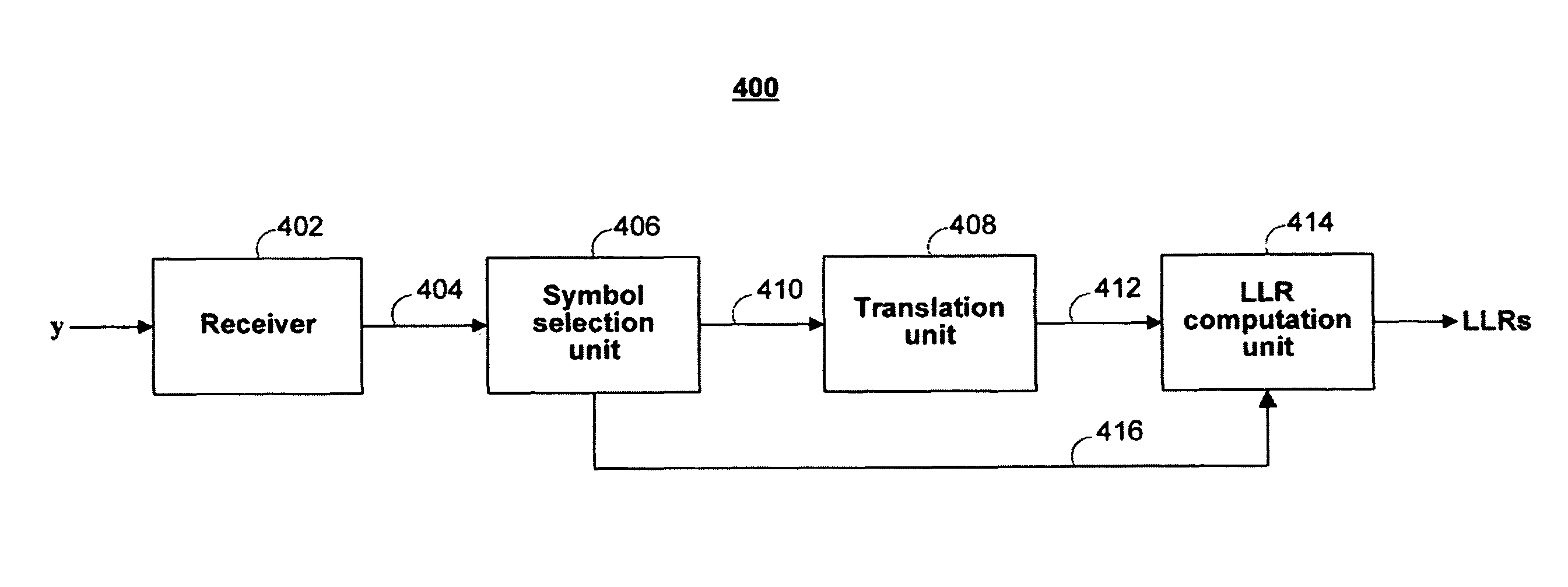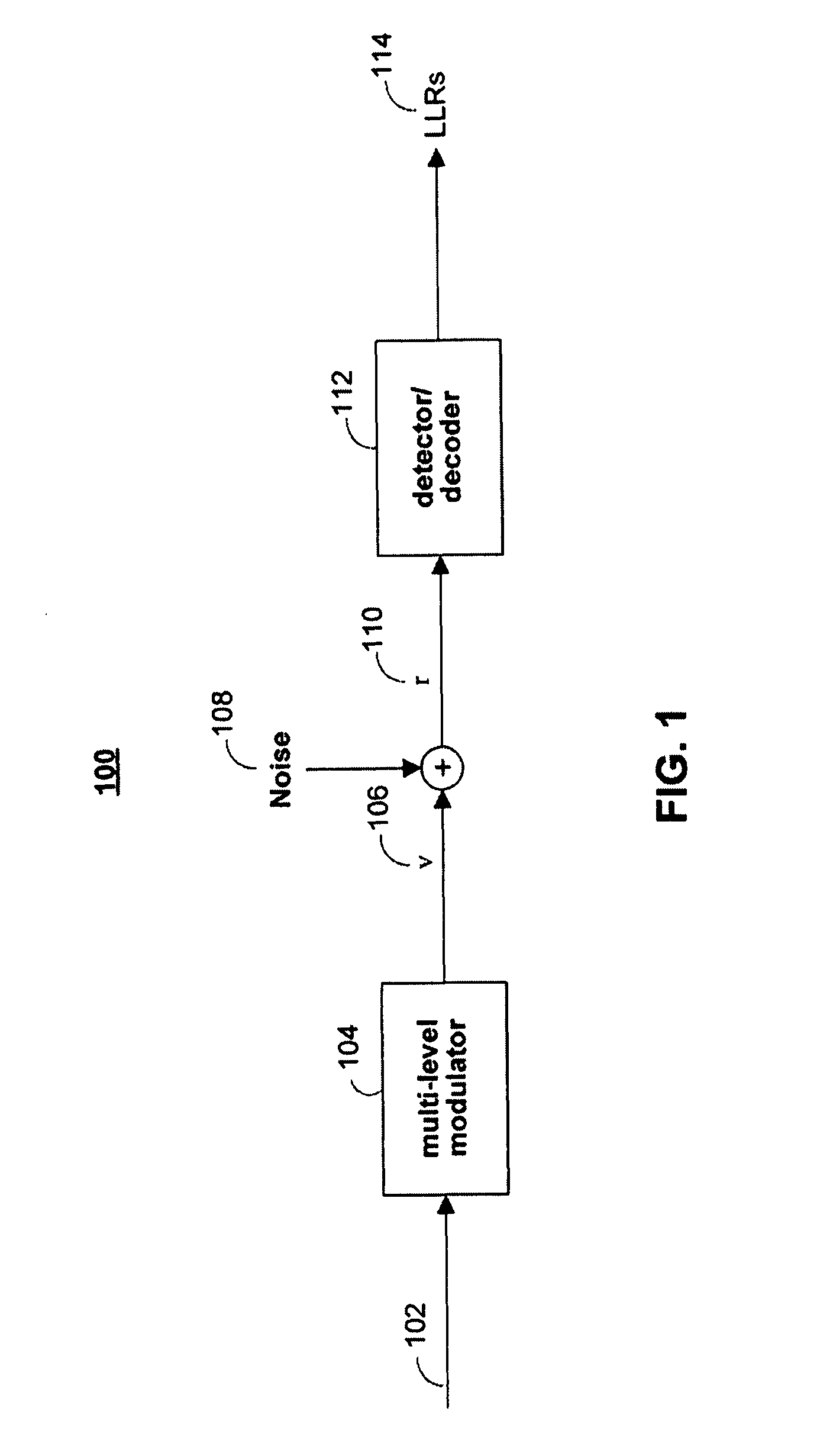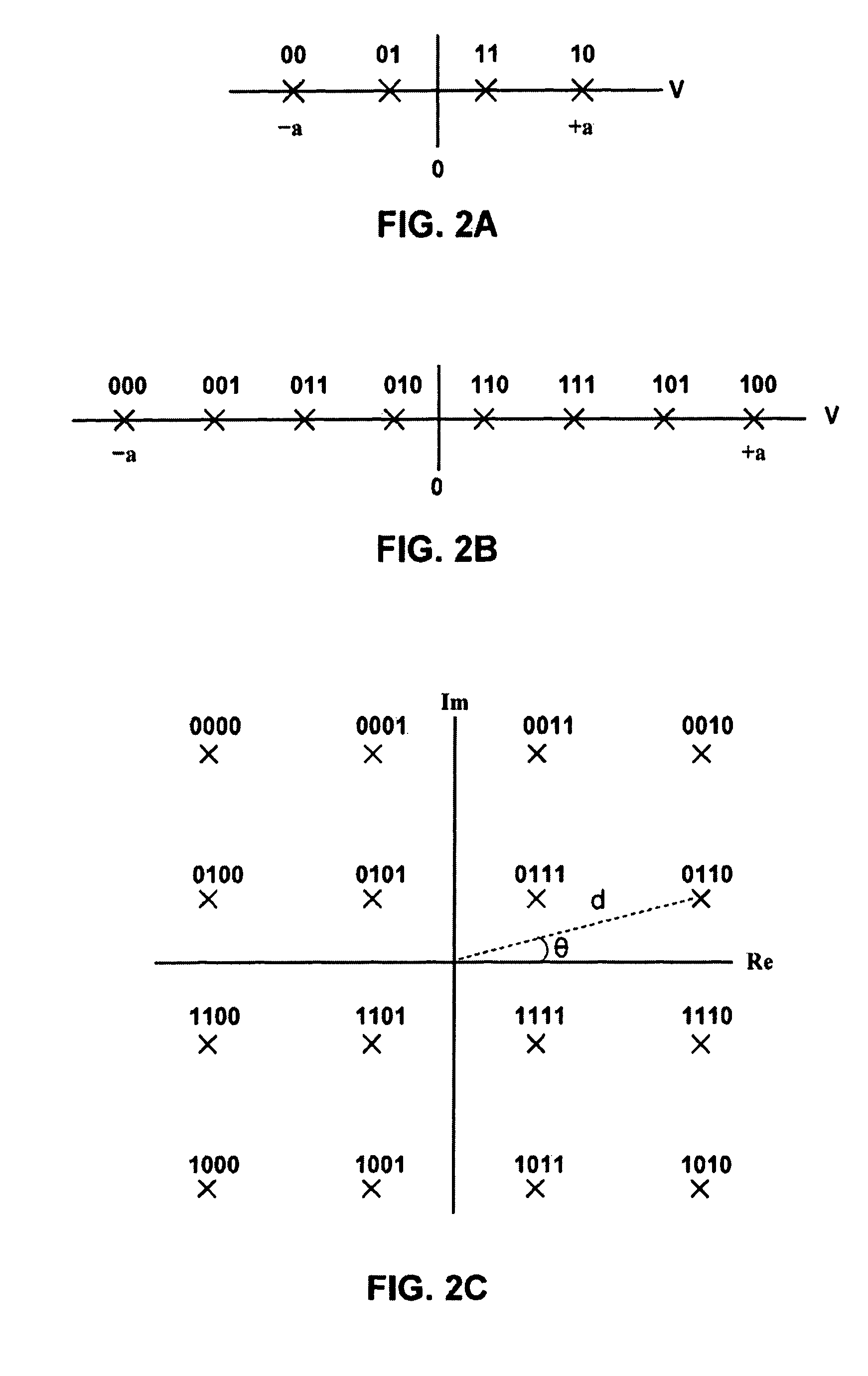Calculating soft information from a multi-level modulation signal
a multi-level modulation and signal technology, applied in the field of signal detection, can solve the problems of complex computation, not being able to find the symbols closest to the received signal, and not being able to solve the problem of complex computation, etc., to achieve the effect of low complexity, less complex and low complexity
- Summary
- Abstract
- Description
- Claims
- Application Information
AI Technical Summary
Benefits of technology
Problems solved by technology
Method used
Image
Examples
Embodiment Construction
[0035]FIG. 1 shows illustrative system 100 of a basic digital communications or storage system. Communications or storage 100 preferably includes multi-level modulator 104 and detector / decoder 112. Multi-level modulator 104 (discussed in detail below) preferably converts digital information 102 into signal 106, also referred to as v. Digital information 102 can represent any type of information to be conveyed (e.g., a sampled / quantized version of an analog signal, binary information, etc.) and can be in any suitable digital form (e.g., coded data, uncoded data, etc.). Digital information 102 may be supplied by any suitable digital information source. For example, the digital information source may be, but is not limited to, a source encoder, an encoder for an error correcting / detecting code (e.g., a convolutional encoder, a Reed-Solomon encoder, a CRC encoder, and LDPC encoder, a turbo code encoder, etc.), a magnetic storage device (e.g., a hard disk), an electrical storage device (...
PUM
 Login to View More
Login to View More Abstract
Description
Claims
Application Information
 Login to View More
Login to View More - R&D
- Intellectual Property
- Life Sciences
- Materials
- Tech Scout
- Unparalleled Data Quality
- Higher Quality Content
- 60% Fewer Hallucinations
Browse by: Latest US Patents, China's latest patents, Technical Efficacy Thesaurus, Application Domain, Technology Topic, Popular Technical Reports.
© 2025 PatSnap. All rights reserved.Legal|Privacy policy|Modern Slavery Act Transparency Statement|Sitemap|About US| Contact US: help@patsnap.com



